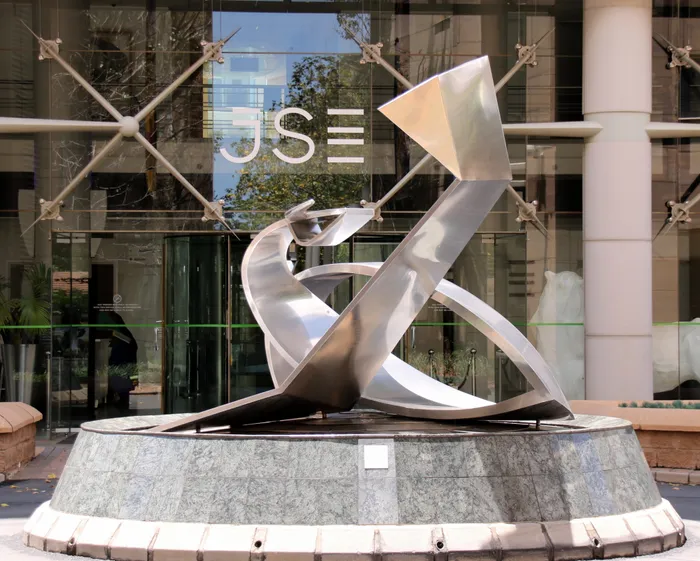Equities surged in May while the Rand stabilised - Chris Harmse
MARKETS ON MONDAY

The JSE had a bumper month and year-to-date
Image: Supplied
The JSE had a bumper month and year-to-date. Given all the growing uncertainties on the global and domestic geo-political front, investors and the public expected the worst for the share and foreign exchange markets during the month of May.
Given the Trump administration’s chop-and-change announcements in the trade war between the US and other countries, like China, Canada, and European countries, as well as the jittery South Africa/US relations, it was expected by many members of the public that the economy and financial markets would go from better to worse.
Table 1: Various share indices performances since the beginning of 2015
Index 1 month 3 months Year-to-date
- JSE ALSI 3.4% 10.2% 12.1%
- JSE Top40 3.4% 10.8% 14.4%
- JSE Financial15 4.3% 8.7% 16.0%
- JSE Industrial 25 4.2% 8.7% 16.0%
- JSE Res 10 3.1% 21.1% 31.3%
- Dow S&P500 5.5% -0.13% -0.14%
- UK FTSE 3.3% -0.04% 7.3%
- MSCI Europe 3.8% 7.0% 18.3%
- Hang Seng 5.3% 1.7% 16.10%
In contrast, share prices on the JSE reached record high levels and their best annual five months since the 2020 Covid-Virus equity downward streak, and all the main indices recorded growth of above 10% since the beginning of the year.
Prospects for share and capital markets
Despite the national budget woes, US trade tariff threats, the lack of domestic service delivery, and a deterioration of transport infrastructure and export facilities, signs of an economic recovery in South Africa boost capital and equity markets.
The cut in the repo rate by the Monetary Policy Committee, nine consecutive months where the inflation rate remained less than the Reserve Bank’s midpoint target of 4.5%, and expectations of an inflation rate remaining around the 3.0% proposed new target range, boosted domestic and global investment confidence.
The expected further cut in fuel prices in June, despite the hike in the fuel levy by the Treasury, the possible extension of the Agoa agreement, and lower proposed US tariffs against South Africa, increase domestic and foreign investment appetite on the South African share and capital markets. The rand against the dollar stabilises and gives reason for a rate cut.
On the foreign exchange market, the rand improved in May to its strongest level against the major currencies for 2025. Against the dollar, the rand improved over the month of May by 3.1% or 50 cents from R18.59 to R17.99 on Friday. Against pound sterling, the currency appreciated by 2.5% or 57cents to R24.21/£ and against the Euro, stronger by 3.0% or 64c to R20.24/€. The stronger rand also contributes to a surge in financial, retail, and property shares on the JSE with the capital market returns also higher.
The Trump administration's latest tariff surge threatens.
US President Trump doubled tariffs on steel imports on Friday from 25% to 50% and announced: “Nobody is going to get around that,” as he also introduced 50% tariffs on imported aluminum. This “new” tariffs surge will be introduced on June 4. This latest tariff craze put global equity markets and currencies under pressure.
The Euro Stoxx 50 index lost 1.07% last week, and the Hang Seng index in Hong Kong traded 1.2% lower on Friday and tumbled by 1.4% over the week.
Prospects for this coming week
This coming week, domestic and foreign investors await the release of US non-farm payrolls for May 2025, which will be released on Friday. The market expects 140 000 new jobs, and the unemployment rate to remain at 4.2%. These two indicators will give an indication of prospects for a bank rate cut by the Federal Reserve at their next interest rate meeting later this month. Domestically, the new vehicle sales for May will be released today. Elsewhere, the ECB will make its interest rate decision on Thursday.

Chris Harmse is the consulting economist of Sequoia Capital Management and a senior lecturer at Stadio Higher Education.
Image: Supplied
Chris Harmse is the consulting economist of Sequoia Capital Management and a senior lecturer at Stadio Higher Education.
BUSINESS REPORT